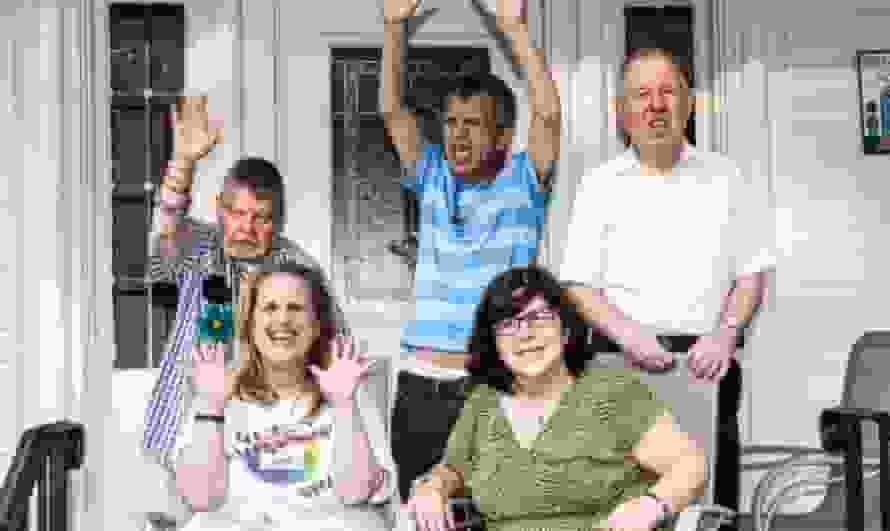Two autistic adults rely on everyday support to live in their homes, such as cooking and personal care. The COVID-19 pandemic has highlighted the importance of these supports for persons with disabilities, often known as home and community-based services.
In a recently published article in USA Today, Julia Bascom who is the executive director of Autistic Self Advocacy Network; and Chris Jorwic is a Medicaid HCBS beneficiary in Elmhurst, Illinois, who uses augmentative communication to persuade state and local governments to recognize that all behavior is a kind of communication and provide more excellent services and supports for his disabled siblings and sisters; gave their statements on their lived experiences during the pandemic.
According to them, the country has a chance to invest in these vital services as Congress prepares to enact a final COVID-19 recovery package. Thus, they are very concerned that people with disabilities will be left behind once again.
Julia is the Autistic Self Advocacy Network founder, a policy advocacy group focused on disability rights. ASAN began recording COVID-19 deaths in institutions for individuals with disabilities in April of 2020. This study has shown what they’ve long suspected: the government’s actions can mean the difference between a society that provides the services they need to prosper in their communities and that abandon them to die.

Julia Bascom (Photo: InPhotograph)
The support on People with Disabilities
People with disabilities who receive support at home, such as both of us, have been in far less danger than those who live in institutions, although many have had their services interrupted, per Chris and Julia.
Chris asserted that his services nearly entirely halted until things were safe. Chris also said he was afraid of the thought that if he didn’t have his staff and supporters, all of his development would vanish, and he will lose everything, including his communication capacity.
Chris’ services have been restored, but his story highlights the importance of home and community-based assistance. They allow disabled individuals to live independent lives and keep people with disabilities out of harmful crowded environments.
Furthermore, both of them have known abuse, neglect, and inadequate sanitation for decades, and they perceived it as too familiar in communal settings like institutions and group homes. In 2007, for example, 94 percent of nursing facilities were found to violate federal health and safety requirements, a figure that has not improved in recent years, Chris and Julia opined.
On the one hand, according to them, people who live in congregate settings have consistently made up 30 percent to 40 percent of total deaths in the United States throughout the pandemic.
Thus, disability advocates weren’t surprised when COVID-19 began to spread through facilities, many of which had already been found to have safety concerns. ASAN has recorded the deaths of almost 185,000 people with disabilities in communal settings since the pandemic began.
As disability rights advocates, both of them want more individuals to live in the community with help. People who receive Medicaid services and require a specific degree of care are currently entitled to get assistance in an institution, yet according to them, hypothetically, there are often years-long waitlists for treatments in their homes.

Chris Jorwic (Photo by Michelle Jorwic Carr)
The Advocacy of People with Disabilities
For a long time, the disability community has worked to increase access to these programs. Thus, Chris and Julia know what policy solutions look like. Ideas like the Biden administration’s commitment to spend $400 billion on these services as part of the Build Back Better program and the Better Care Better Jobs Act would start to fill this gap.
However, Chris and Julia need Congress to take their community seriously and appropriate significant financing for these plans in the current recovery package.
Chris and Julia remarked that they are concerned that their community will find itself back where it began without a genuine commitment. Vaccines and resumption of services have helped alleviate the isolation that many persons with disabilities faced during the pandemic, but the impacts remain.
Chris postulated that the pandemic affected his mental health, in a sense that even feeling fantastic on seeing people without masks on, anxiety lingers. He is terrified to leave his house; however, the good thing is, he is working on it.
How they perceived ‘tomorrow’
After the COVID-19 outbreak, some people have begun to talk about getting back to normal. However, the disability community has suffered significant losses due to COVID-19, and many of the practices that their society accepted as “normal” were already damaging their community before the pandemic. Congress has the opportunity to address the underlying causes of this problem and ensure that persons with disabilities may always receive the assistance they require in the comfort of their own homes; Chris and Julia expect them to do so.
Chris and Julia posited that they want to see a society in which people with disabilities are treated better than previously, a community in which everyone’s voice is heard and every decision is respected. Everyone has access to the services they require. We’ll need significant legislative changes that prioritize helping disabled people in their communities rather than isolating them to build this society, per Chris and Julia.




![Tyson Foods Plant [Photo: Food Manufacturing]](https://southarkansassun.com/wp-content/uploads/2023/08/iStock_1185520857__1_.5e441daa51cca-600x337.jpg)







![Silverado Senior Living Management Inc. [Photo: Los Angeles Times]](https://southarkansassun.com/wp-content/uploads/2023/10/download-6-4-600x337.jpg)

![China's Wuhan Institute of Virology [Photo: Nature]](https://southarkansassun.com/wp-content/uploads/2023/09/d41586-021-01529-3_19239608-600x337.jpg)
















